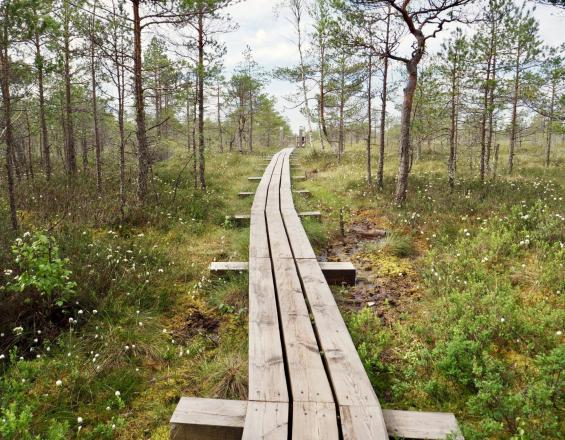Conservation is evolving, and the PANORAMA initiative provides a wealth of examples that illustrate this change.
A recent paper, Leverage points and levers of inclusive conservation in protected areas, published in Ecology and Society, provides insights into inclusive conservation, a concept shaping modern environmental efforts. The paper analysed 263 Solutions featured on the PANORAMA platform, which was invaluable for the research team, as it provided them with a global dataset of nature conservation projects to comb for patterns. We sat down with lead author Dr. Miguel Ángel Cebrián-Piqueras to learn more about his research and his advice for PANORAMA solution providers.
Inclusive conservation goes beyond traditional approaches. “I'm particularly interested in promoting and trying to mainstream the concept of inclusive conservation, which basically relates to promoting more participatory and transdisciplinary conservation,” says Dr. Cebrián-Piqueras.
In the past, work aiming to conserve the natural environment, and work supporting human rights and wellbeing were seen as two issues to be tackled separately. But inclusive conservation marries the two. It is not just about protecting natural landscapes; it's about integrating the voices and needs of local communities, particularly underrepresented groups like women, youth, and Indigenous Peoples. Dr. Cebrián-Piqueras's research underscores this by revealing how inclusive strategies lead to more effective and sustainable conservation outcomes.
The paper offers several key insights into the field of conservation. It emphasizes the importance of participatory approaches, highlighting that conservation efforts are more successful when they involve local communities in decision-making processes. It points out the benefits of empowering locals and valuing their traditional knowledge, leading to more resilient conservation outcomes. Naturally, conservation efforts developed by the community and for the community based on local knowledge are more likely to be supported and maintained, leading to better outcomes.
Additionally, the study underscores the significance of incorporating diverse perspectives in conservation, particularly from groups that are often overlooked in these discussions. This approach not only fosters innovative solutions but also ensures that conservation efforts are equitable and effective. "Beneficiaries like youths and children or women, they were not really much reported as a positive outcome, but they were very, very key or very crucial," says Dr. Cebrián-Piqueras, “it tells us that these beneficiaries have to be more included in protected area management.”
He also noted that elderly people were not mentioned as beneficiaries in the case studies, but this is a research gap he would be interested in exploring further.
Social cohesion is also a critical factor in conservation. The paper suggests that strengthening community bonds can catalyse collective action and stewardship, benefiting both people and the natural environment. This aspect of social cohesion as a leverage point in conservation is a notable finding from the paper.
"We found five major clusters, or conservation archetypes that are inclusive from our social inclusive perspective, and from then we identify, which are the leverage points and levers that can activate these positive conservation outcomes," says Dr. Cebrián-Piqueras.
Each of these five major conservation archetypes embodies a unique conservation strategy, vital for achieving successful outcomes:
Community-Based Conservation emphasizes the engagement of local communities, particularly Indigenous Peoples and minorities, in conservation. It focuses on enhancing social cohesion, reducing poverty, and preserving local customs and knowledge. Sustainable Management, on the other hand, aims to balance ecological preservation with economic sustainability. It promotes sustainable local production and economic benefits for local stakeholders, ensuring conservation efforts align with local economic interests.
Conflict Resolution targets areas where conservation has led to disputes, advocating for improved management, laws, and strategies to resolve these conflicts effectively. Multi-level and Co-governance stresses the importance of involving multiple governance levels, including NGOs, in the management of protected areas, especially those that are large or cross-boundary. Lastly, Environmental Protection and Nature’s Contributions to People focuses on the intrinsic value of biodiversity and the vital services ecosystems provide to humans, advocating for policies that protect natural environments for their own sake and for human well-being.
Together, these archetypes provide a comprehensive framework for conservation, combining ecological and socio-economic considerations to ensure more inclusive, effective, and equitable conservation practices.
Implications for conservation practitioners
The insights gained from Dr. Cebrián-Piqueras’s work offer valuable guidance for conservation practitioners in several aspects.
It is crucial for practitioners to understand and integrate local knowledge systems into their projects. This approach not only enhances the relevance, but also increases the acceptance of conservation efforts.
Focusing on inclusivity while developing and sharing strategies can significantly broaden the impact of their work. Engaging with a diverse range of stakeholders, especially marginalized groups, is essential for achieving comprehensive and sustainable outcomes.
The findings highlight the importance of contextual adaptability. Conservation practitioners should recognize that strategies effective in one region might not be directly applicable in another due to cultural, social, and environmental differences. Mindful adaptation of solutions to suit diverse contexts is key to successful conservation efforts and sustainability.
Finally, Dr. Cebrián-Piqueras cautions that while inclusive conservation is worth the effort, it’s not always easy. "Nothing is perfect about inclusive conservation. In some cases, inclusive conservation can bring tensions," he says.
The Way Forward
Dr. Cebrián-Piqueras's research is a call to action for all conservation practitioners and policymakers. As we navigate the complexities of modern conservation challenges, inclusive approaches offer a pathway to more effective and sustainable solutions. Many of the examples published on the PANORAMA platform illustrate how inclusive conservation can be implemented in practice.
Synthesis of solutions on a given topic, to understand common insights and success factors, is a priority area of work for the PANORAMA initiative, and the PANORAMA partners welcome ideas for collaboration, particularly from academic institutions.
